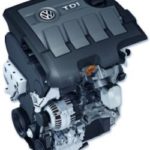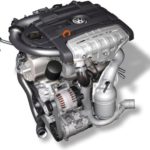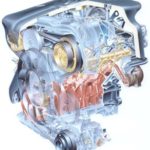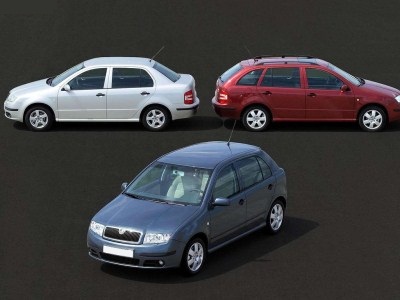Škoda Rapid (2012 - 2019) - Used, experience, engines, problems
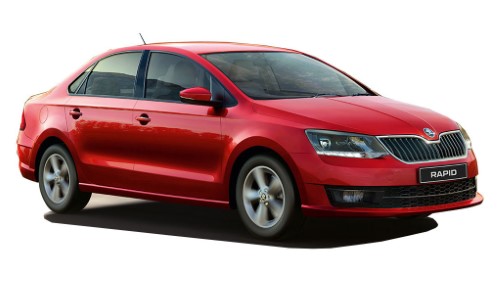
Škoda Rapid
The Škoda Rapid has the task of filling the gap between the Škoda Octavia and the Fabia hatchback. The Škoda Rapid offers a more conservative and simple design, an almost ordinary interior. There were a few problems at first, but over time, Rapid found its place in the market. Rapid is a classic Škoda characterized by quality, performance, good driving characteristics, exemplary ergonomics and practicality that are necessary for everyday travel.
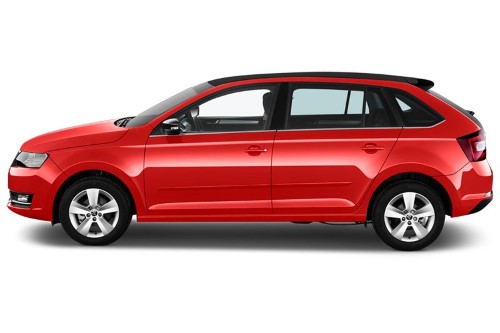
The Skoda Rapid offers very good driving characteristics.
Škoda Rapid - History
Škoda The Rapid sedan version was presented to the public at the Paris Motor Show in autumn 2012. Under the hood, it offered four petrol and two diesel engines. The basis of the offer is a 1,2 MPi (55 kW) three-cylinder petrol engine, followed by a 1,2 TSi turbo petrol with 63 kW or 77 kW, and the top of the petrol range is reserved for a four-cylinder 1.4 TSi with 90 kW output. Diesel engines are a four-cylinder 1.6 TDi in two versions of 66 kW and 77 kW. Of the gearboxes on offer, there is a five-speed manual, in the case of a stronger 1,2 TSi, a six-speed manual. For the 1,2 TSi 77 kW and 1,6 TDi 66 kW engines, it is also available 7 degree DSG, in the case of the 1,4 TSi, the 7-speed DSG is the only choice. There are three trim levels on offer: Active, Ambition and Elegance. The manufacturer also prepared the so-called. called Green Line, the package includes a start-stop system, tires with reduced rolling resistance. . .
In mid-2013, the range of equipment was extended, including xenon headlights. Since the fall, another version of the body has been offered, called the Rapid Spaceback, 4304 mm long, 179 mm shorter than the compact version, other dimensions, including wheelbase, have remained unchanged. With the arrival of the Euro 6 standard in the fall of 2014, the engine offering has changed significantly. The basic 1.2 MPI 55 kW three-cylinder was abandoned, the 1.2 TSI older engines (EA111) were replaced by the new 1.2 TSI EA 211 series with 66 kW and 81 kW. The 1.4 TSi comes with the same 92 kW. In the case of the diesel engine, the existing 1.6 TDI (EA 189) was replaced by a new turbodiesel engine in the new EA 288 series. The 1.4 TDI three-cylinder with 66 kW, followed by the 1.6 TDI with 85 kW. New seven-speed DSG is available with 1.2 TSi 66 kW, 1.4 TDi 66 kW, and old DSG combined with 1.4 TSi. With the advent of Spaceback, the manufacturer introduced the Monte Carlo sports package. In the summer of 2015, the range of Spaceback and ScoutLine equipment packages was enriched.
In the spring of 2017, the manufacturer unveiled a redesigned Škoda Rapid. Under the hood, the new three-cylinder TSi comes in two power variants of 70 and 81 kW, replacing the 1,2 TSi (66 and 81 kW). In the case of the chassis, minor changes have been made to improve ride comfort on worse roads and reduce tire noise.
Too bad Rapid experience engines
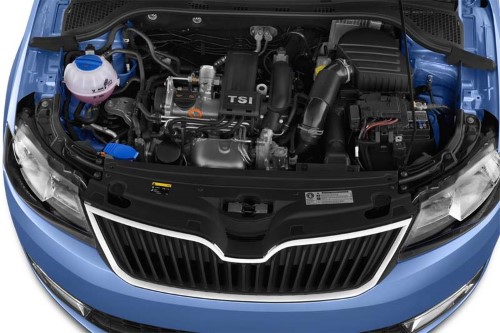
Engines - Škoda Rapid
Rapid 1.2 MPi (HTP)
The basis of the offer is the old well-known 1.2 MPi (HTP) three-cylinder petrol engine with a maximum power of 55 kW and 112 Nm of torque. Although the 1.2 MPi (HTP) is not very popular, it must be said that over the time of installation, the engine manufacturer has significantly improved both driving characteristics and reliability. With the latest evolution, HTP has received a modified intake and exhaust, a new control unit and an improved Start Assist. In practice, the three-cylinder engine has a relatively good design and the sound effect of the engine under load and at higher speeds is also improved. In terms of dynamics, this motorization is most suitable for driving in the city and the surrounding area with a lower vehicle load. With a balanced ride, fuel consumption of about 6 liters will be good, and the engine will also be very good in terms of reliability.
Rapid 1.2 TSI
Significantly more action comes with more load and a 1.2 TSI four-cylinder turbocharged engine, which is available in two 63 kW (160 Nm) and 77 kW (175 Nm) versions. Both versions of the TSI 1.2 provide decent vehicle dynamics. Engines are happy to respond to the pressure on the accelerator pedal, ready to accelerate from about 1400 rpm and pull to 5000 rpm, while subjectively the best opportunity is set in the range of 2000 to 4500 rpm. The average consumption averages about 6 liters. However, with a significant increase in consumption, it is important to anticipate faster motorway travel, where the engine already enriches the mixture with a higher proportion of gasoline to cool the catalytic converter, leading to an increase in consumption of over 8 liters. At higher speeds, you have to get used to the higher engine noise levels.
The Škoda Rapid has got an improved 1.2 TSi engine that includes a more powerful and durable chain, including other components. All in all, this engine as a drive provides decent driving dynamics at reasonable load levels.
Rapid 1.4 TSI
The most powerful 1.4 petrol engine delivering 90 kW and 200 Nm of torque. Engine performance is also enhanced by the high-speed seven-speed DSG transmission. On the other hand, running the engine above 4500 rpm does not make much sense, because the expected power is not obtained, noise is made and consumption is significantly increased. In normal driving, consumption is maintained at around 6,5 liters, which only increases significantly with more frequent city driving and faster freeway travel. From a reliability point of view, the biggest weakness of the engine is the decoupling of the engine, which is reflected by increased noise, neglect of the problem, problems with starting the engine, running the engine or the engine error light on the instrument panel.
With the advent of the Euro 6 emission standard under the hood comes a new series of petrol engines EA 211 1.2 TSI with 66 kW or 81 kW and 1.4 TSI with 92 kW. The EA 211 series engines include a 16-valve variable belt system driven by a toothed belt. New exhausts have been installed in the head, which means more efficient cooling of exhaust gases. At high loads (eg fast driving on the highway) it is no longer necessary to add an increased amount of fuel to the catalyst, which has a positive effect on fuel consumption. The engines are characterized by quiet operation and sophistication, relatively fast response to the depressed accelerator pedal, robust flexibility even at low speeds. The engines are also commended for fuel consumption, which averages about 5.5 liters at 1.2 TSi and about 6 liters at 1,4 TSi. Practice has also shown solid reliability - or problems are rare.
Following the 2017 modernization, a new three-cylinder is on offer 1.0 TSI engine, which replaced the four-cylinder 1.2 TSI. There are two versions with 70 kW (160 Nm) and 81 kW (200 Nm). Excellent engine power is available in a relatively wide range of torque. The engine is characterized by a rapid response to the accelerator pedal pressure and an almost negligible turbocharger. In practice, both versions 1.0 TSI provides decent dynamics, higher action (especially in medium and higher speeds) provide more powerful versions, which in addition to a few kW and Nm moreover, help manual 6-speed and 7-speed DSG transmission. Power deficit 1.0 TSI is more pronounced, at higher elevations. Consumption is about 5,5-6 liters on average, while when traveling fast or traveling more often around the city it increases to about 6,5-7 liters, on the other hand, driving out of town means consuming up to 4 liters.
Rapid 1.6 TDi
The diesel engines at the Škoda Rapid are located under the hood mainly in corporate vehicles which were expected to have a large annual mileage. In the Rapid, the 1.6 TDi engine comes in two power versions, the weaker with 66 kW and 230 Nm, and the more powerful 77 kW and 250 Nm. Consumption is about 5 - 5,5 liters in normal use. The reliability of the engine is quite good, and the most active components are mostly injectors that are quite sensitive to the quality of diesel fuel.
As with petrol engines, so with diesel engines with the advent of the Euro 6 standard, the new EA 288 series replaced the older EA 189 series. The weaker 1.6 TDI replaced three-cylinder 1.4 TDI with 66 kW and 230 Nm and the more powerful 1.6 replaced it too 1.6 TDI with 81 kW, but also 250 Nm. Among the most significant generational changes are the water-cooled compressed air intercooler, the new Bosch injectors (formerly Continental - Siemens) and the new exhaust integrated into the cylinder head.
In the case of the 1.4 TDi three-cylinder, the aluminum alloy engine block is interesting (the 1.6 TDi has a cast iron block). The cylinder diameter of 79,5 mm is shared with the larger four-cylinder 1.6 TDI, the piston stroke of 95,5 mm is the same with the 2.0 TDi. It is also interesting that it automatically increases the idle speed to 1200 rpm. Approximately 800 rpm is reduced when the vehicle is stopped. In practice, in the case of less experienced drivers, it means eliminating braking or even turning off the engine, because the increase in speed occurs when the clutch pedal is released and therefore the vehicle can be easily started by releasing the clutch without depressing the accelerator pedal.
From an operational point of view, the three-cylinder is, of course, a little more refined and smaller and noisier than the larger four-cylinder 1.6 TDI, but all within acceptable limits. The engine runs in completely smooth, with the best dynamics between 1800 and 3000 rpm. Consumption is about 5 liters in average driving.
Transmission
In most cases, the Rapid has a six-speed manual transmission with precise and easy travel. There's also DSG gearbox with seven speeds - in the case of 1.4 TSi only, on 1.2 TSi and 1.6 TDi respectively, 1,4 TDi for extra charge. The DSG transmission is characterized by a fast response, which will satisfy the fast driving. Overall, care must be taken with this transmission and if the vehicle has more than 100.000 km, the transmission function must be checked correctly. Possible repairs are quite expensive and can exceed € 1000.
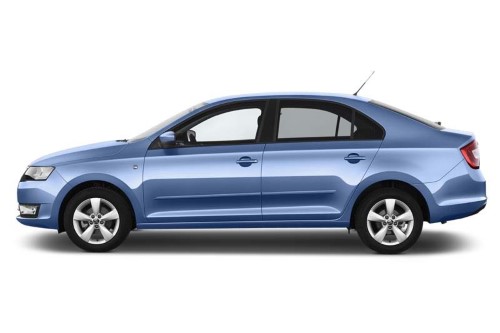
Škoda Rapid
Too bad Rapid problems and failures
The reliability of the Škoda Rapid is at a fairly good level, and problems usually occur only with high mileage, poor treatment of the car or neglect of maintenance. Thanks to the use of the Group's components, the service network is very wide and the prices of services / parts are affordable.
Problems with vehicle electronics are rare, and problems are in most cases resolved within warranty inspections. The interior of the vehicle withstood the test of time well, excessive wear usually occurs only with less careful used cars - scratched plastic surface and the like. Occasionally, faulty el. windows, porous door seals can mean water penetration into the interior. Increased noise from the vents usually means a malfunction of the air circulation cover control or the penetration of wood leaves into the cabin filter area. In the case of the Spaceback version, in the early years there was a burst of the rear third brake light. The manufacturer has modified the light and the replaced light does not shoot anymore.
In petrol engines, a lambda sensor malfunction or a faulty bomb occurs more often when regular spark plug replacement is neglected, the problem can occur at higher mileage, leading to uneven operation with "fewer" cylinders - vibration, loss of power or uneven idling. . With TSi engines, there is occasionally a problem with the control of the turbocharger overload, which leads to the ignition of the engine fault lamp and the transition of the engine to safe mode (reduced power).
With the 1,2 MPi, 1,2 TSi and 1,4 TSi EA 111 series, there is sometimes a problem with the noisy chain. Regular service (irregular oil change) and the driving style itself have a significant impact on chain maintenance. The unfavorable influence is mainly the so-called gentle ride at too low revs. At that time, the mechanism is mostly under the pressure of torsional vibrations. The problem with the timing chain is manifested by excessive noise, lighting of the MIL lamp - engine diagnostics, problems with starting the engine or loss of power. The solution is to replace the drive chain (chain, guides, gears, etc.).
With TSI engines, there is sometimes a problem with the so-called dirty catalytic converter, which is especially true for drivers who drive mostly at a slow pace and their engine runs at low revs. Longer driving at a slower TSI engine pace, there is a risk of unburned soot accumulating in the catalytic converter, which ECU engine can evaluate as a catalyst error. It is therefore advisable to drive the car slightly from time to time.
By driving the TSI engine more often on shorter distances with a cold engine, there is a danger that the engine oil will be diluted too much with unburned gasoline, which brings additional risks of excessive engine wear. The solution is to occasionally drive the car on the highway, or change the engine oil more often.
TSI engines often have a rougher engine sound after a cold start, less refinement, and sometimes less smooth acceleration. It is caused by the accelerated heating of the catalyst and the increase in the temperature of the exhaust gases. This mode, however, lasts only a minute and is not a technical problem. For newer TSIs equipped with variable valve timing usually increases the noise after a cold start, due to lack of oil in the valve control mechanism. A few seconds after starting the engine, the oil enters the mechanisms and the engine starts to run quieter.
In the case of diesel engines, more frequent driving over shorter distances faces problems with the EGR valve - clogging (lower engine power, jerking or the engine is in safety mode, along with the engine light on).
In the case of the 1.6 TDi EA 189 engine, a crack may appear on the radiator of the EGR valve for exhaust gas recirculation (more common in winter, especially on vehicles traveling on shorter distances) - the coolant penetrates the intake, making it a gradual drop . Coolant loss can also occur at the water pump, which is recommended to be changed together with the pipes, saves work and avoids unnecessary problems.
In the case of the 1.6 TDi engine, engine shutdown, gear changes or a difficult start sometimes occur. The reason is usually inaccurate air flow sensor data resulting in replacement. However, it often happens that there are no problems, and the reason may be an inadequate air filter (it is best to change the original) or a failure of the temperature sensor. There is also a beneficial effect on these problems. Software update along with installation of airflow rectifier in the air intake system before the air mass sensor.
Problems with spent injectors, common rail injection engines are generally a little more sensitive to fuel quality, so it is recommended to add a higher quality diesel additive from time to time. Failure / excessive wear of the injector causes cold start problems, uneven operation, noisier operation, low speed variation and loss of power. Poor fuel is also the cause of common-rail control valve failure, the problems are similar to faulty injectors. Higher mileage also carries the risk of turbocharger problems (leading to increased oil consumption, intake of oil, reduced / loss of power) or control of charge pressure.
Škoda Rapid - Service
In addition to the 1.2 MPI (HTP), 1.2 TSi and 1.4 TSi (both EA 111), other engines have toothed belts that change at 160.000 km and at 8-year intervals (TDI EA189). 180.000 km and 10 years for TDi EA 288 and 210.000 km and 10 years for TSi EA 211. For oil change the fixed service interval is 30.000 km or 2 years, or so-called variable, when the on-board computer requests a replacement. For better operational reliability and longer engine life, it is recommended to shorten the oil change interval to a maximum of 15 km. The air filter has a replacement interval every 000 km or 30.000 years, a cabin filter recommendation every 2 km or 30.000 year. The spark plugs in petrol engines are optimally changed every 1 km. Automatic transmissions (DSG) have an oil change interval of 60.000 km.
Too bad the Rapid dimensions
| Body type: | liftback | Spaceback |
| Dimensions (L x W x H mm): | 4483 x 1706 x 1459 | 4303 x 1706 x 1455 |
| Wheelbase
(Mm): |
2602 | 2602 |
| Luggage space (l): | 550 | 415 |
| Drive: | front wheels | front wheels |
| Fuel tank volume (l): | 55 | 55 |
Škoda Rapid - engines
| Motor | Volume | Engine code | Power |
| 1.2 TSI | 1197 cc | CBZA | 63 kW |
| 1.2 TSI | 1197 cc | CBZB | 77 kW |
| 1.2 | 1198 cc | CGPC | 55 kW |
| 1.4 TSI | 1390 cc | CAXA | 90 kW |
| 1.6 | 1598 cc | CFNA | 77 kW |
| Motor | Volume | Engine code | Power |
| 1.6 TDI | 1598 cc | CAYB | 66 kW |
| 1.6 TDI | 1598 cc | CAYC, CLNA | 77 kW |
Škoda Rapid half price - used half price overview
Recommendation of similar texts:

Hi there, I am Mladen and I am an auto enthusiast. I started this blog years ago to help like minded people share information about latest cars, car servicing ideas, used car info, exotic cars, and auto technology. You will find helpful articles and videos on a wide variety of cars - Audi, Mercedes, Toyota, Porsche, Volvo, BMW and much more. Ping us if you have anything cool to share on latest cars or on how to make older cars more efficient, or just want to say hi!




